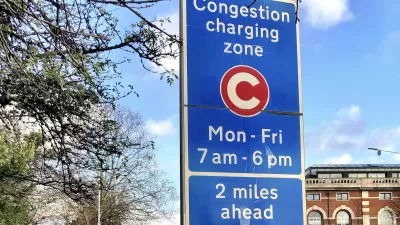An IMF working paper determined that global energy subsidies totaled $5.3 trillion this year, the worst offenders are China and the U.S. Placing a price on these subsidies, which include air pollution and carbon emissions, may be key to mitigation.
"Governments around the world charge prices for energy that do not account for its harmful environmental, health and other side effects, amounting to a $5.3 trillion "post-tax" subsidy this year, the International Monetary Fund [IMF] said in a report on Monday," writes Anna Yukhananov of Reuters.
The largest portion of global energy subsidies are the negative externalities resulting from air pollution, over twice as much as from greenhouse gas emissions, which is the next highest.
Credit: iMFdirect
A disclaimer from the IMF: "This Working Paper should not be reported as representing the views of the IMF. The views expressed in this Working Paper are those of the author(s) [David Coady; Ian W.H. Parry; Louis Sears; Baoping Shang] do not necessarily represent those of the IMF or IMF policy."
"The report comes as almost 200 nations are trying to work out a deal to combat global warming ahead of a summit [United Nations Framework Convention on Climate Change] in Paris in December," writes Yukhananov. "Getting rid of fossil fuel subsidies and setting policies to price carbon pollution are seen as key international measures that would help keep temperatures from rising."
The IMF said China in particular failed to charge its more than 1 billion consumers for the pollution that comes from heavy use of fossil fuels, adding up to a $2.3 trillion subsidy this year.
The United States was the second-biggest offender, with an estimated $699 billion subsidy, followed by Russia, the European Union, India and Japan.
What are energy subsidies
"We define energy subsidies as the difference between what consumers pay for energy and its 'true costs,' plus a country’s normal value added or sales tax rate," write IMF economists Benedict Clements and Vitor Gaspar in the iMFdirect blog, a global economic forum, on the working paper.
This paper is the IMF's second report on energy subsidies. The 2013 paper, posted here, accounted almost $2 trillion in subsidies.
However, those were '"pretax subsidies' that allow firms and households to buy coal, gasoline or other fuel sources below their cost of supply," explains Yukhananov. "But the Fund said it had turned its focus to the post-tax subsidies that mean prices fail to reflect costs like unfair tax advantages and deaths from pollution."
Some Transportation Costs Included in Subsidies
From the working paper [PDF]:
Charges for road-related externalities are only assessed on fuel consumption that is related to transportation. For gasoline and diesel used in transportation, damages include global warming from CO2 emissions, local air pollution, and traffic congestion and accidents.
Using general funds to pay for road construction would not appear to be accounted for in the report.
Bottom Line: These subsidies are huge!
Clements and Gaspar spell out the dire implications of these subsidies in their blog:
The fiscal implications are mammoth: at US $5.3 trillion, energy subsidies exceed the estimated public health spending for the entire globe. It also exceeds the world’s total public investment spending. The resources freed from subsidy reform could be used to meet critical public spending needs or reduce taxes that are choking economic growth.
FULL STORY: IMF says energy subsidized by $5.3 trillion worldwide

Study: Maui’s Plan to Convert Vacation Rentals to Long-Term Housing Could Cause Nearly $1 Billion Economic Loss
The plan would reduce visitor accommodation by 25,% resulting in 1,900 jobs lost.

Alabama: Trump Terminates Settlements for Black Communities Harmed By Raw Sewage
Trump deemed the landmark civil rights agreement “illegal DEI and environmental justice policy.”

Why Should We Subsidize Public Transportation?
Many public transit agencies face financial stress due to rising costs, declining fare revenue, and declining subsidies. Transit advocates must provide a strong business case for increasing public transit funding.

Paris Bike Boom Leads to Steep Drop in Air Pollution
The French city’s air quality has improved dramatically in the past 20 years, coinciding with a growth in cycling.

Why Housing Costs More to Build in California Than in Texas
Hard costs like labor and materials combined with ‘soft’ costs such as permitting make building in the San Francisco Bay Area almost three times as costly as in Texas cities.

San Diego County Sees a Rise in Urban Coyotes
San Diego County experiences a rise in urban coyotes, as sightings become prevalent throughout its urban neighbourhoods and surrounding areas.
Urban Design for Planners 1: Software Tools
This six-course series explores essential urban design concepts using open source software and equips planners with the tools they need to participate fully in the urban design process.
Planning for Universal Design
Learn the tools for implementing Universal Design in planning regulations.
Smith Gee Studio
Alamo Area Metropolitan Planning Organization
City of Santa Clarita
Institute for Housing and Urban Development Studies (IHS)
City of Grandview
Harvard GSD Executive Education
Toledo-Lucas County Plan Commissions
Salt Lake City
NYU Wagner Graduate School of Public Service




























